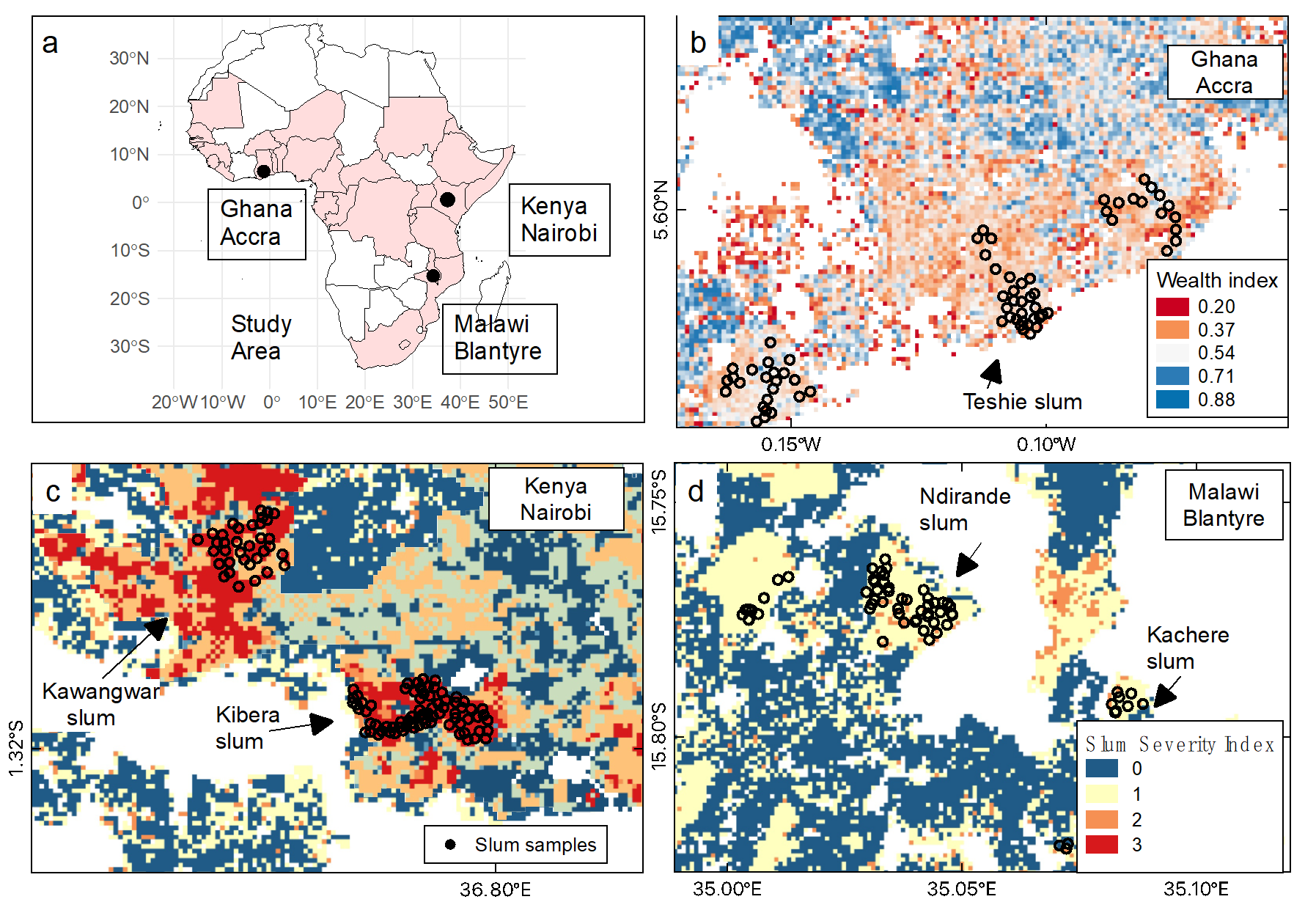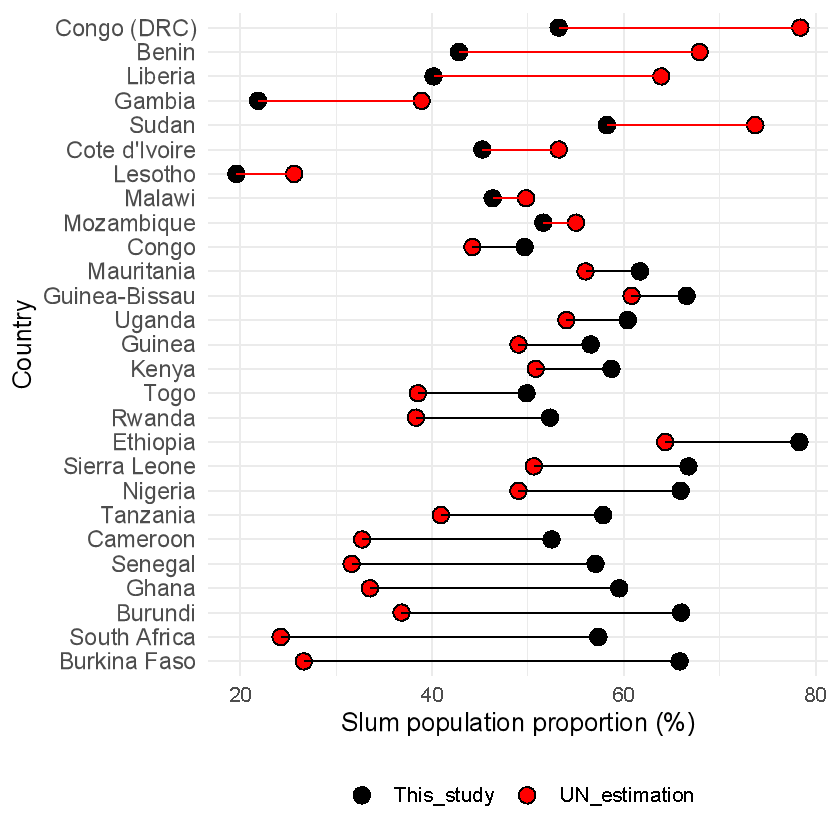Yu Le’s Research Group from Tsinghua DESS Reveals Spatial Patterns of African Slums and Releases High-Resolution Distribution Maps
Urban slums represent a critical challenge in contemporary global urbanization, where service deprivation and spatial inequalities are growing increasingly severe. These issues undermine progress toward sustainable urban development. According to UN-Habitat definitions, over one billion people globally reside in slums. However, existing monitoring systems remain constrained by incomplete data, coarse spatial granularity, and inconsistent classification methods, limiting their ability to accurately map slum extents and socioeconomic disparities. Such gaps severely hinder effective progress in targeted poverty reduction, infrastructure investment, and equitable service delivery.
To address these challenges, Yu Le’s Research Group from the Department of Earth System Science (DESS) at Tsinghua University developed a machine learning model that integrates socioeconomic surveys, remote sensing observations, and urban built-environment features. The model, which comprehensively considers multidimensional indicators such as housing conditions, access to safe drinking water, sanitation facilities, and living density, systematically identifies and maps urban slums in 32 sub-Saharan African countries at a 100-meter spatial resolution for the first time. The results have successfully identified the distribution of major slums in the study area (see Figure 1), with an average accuracy of 74%. Based on this, it is estimated that approximately 54.6% of the urban population lived in slums in 2020, significantly higher than the estimate (47.7%) from the United Nations Human Settlements Programme (UN-Habitat) for the same period (see Figure 2). The study further revealed that while the proportion of the urban population living in slums has declined in some countries over the past two decades, wealth inequality within cities has continued to worsen. This trend is particularly pronounced in countries with large slum populations.

Figure 1 Spatial distribution of the wealth index and slum severity index (SSI) in selected cities in sub-Saharan Africa.


Figure 2 Comparison of the estimated proportion of urban slum populations in this study with UN-Habitat estimates.
The findings were published in Nature Cities under the title "Mapping urban slums and their inequality in sub-Saharan Africa." A concurrent "Research Briefing" titled "Street-level mapping of urban slums and wealth inequality in sub-Saharan Africa" provided commentary and positive evaluation of the work. Li Chengxiu, a postdoctoral researcher at Tsinghua DESS, is the first author, and Associate Professor Le Yu is the corresponding author. Collaborating institutions include UN-Habitat, the University of Southampton, the University of Malawi, the Malawi University of Science and Technology, GeoPsy Research (Kenya), the University of Hong Kong, the Institute of Geographic Sciences and Natural Resources Research of the Chinese Academy of Sciences, Beijing Technology and Business University, and Beijing Normal University-Hong Kong Baptist University United International College. The research was supported by the National Key R&D Program of China, the Postdoctoral Science Foundation, and Tsinghua University's Independent Research Program.
Full-text link: https://www.nature.com/articles/s44284-025-00276-0
Research Briefing link: https://www.nature.com/articles/s44284-025-00291-1
The slum distribution maps, along with the data and code used in this study, are available on Zenodo: https://zenodo.org/records/14998570.
Written by Li Chengxiu